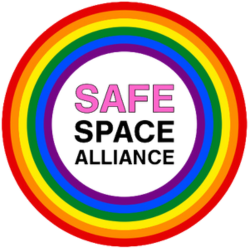Do you avoid conflict? Do you prioritize others’ feelings, opinions, or needs above your own? Are you a people pleaser? Do you fear rejections, criticism, or abandonment? Are you constantly on guard? These are signs of self-silencing.
What is Self-Silencing?
Suppressing thoughts, feelings, and needs in an effort to avoid conflict and appease others to maintain relationships is self-silencing, a type of self-denial. People who self-silence tend to put others’ opinions and desires above their own as a fawn trauma response. This may stem from fear of rejection or negative consequences within the relationship or social dynamics. Self Silencing often leads to frustrations, resentment, or a diminished sense of self. People of all genders self-silence, but it often affects women more due to cultural pressures of gender roles and expectations of self-sacrifice. Avoidant behaviors of self-silencing may lead to short term relief that temporarily numb or ignore emotional pain and distress; however, over time it can take a toll on one’s mental and emotional well-being and manifest as stress, anger, anxiety, depression, disordered eating, and trauma disorders. Furthermore, Self Silencing can be a contributing factor that negatively impacts physical health such as chronic fatigue syndrome or irritable bowel syndrome.
10 Signs of Self-Silencing:
- Lacking boundaries
- Difficulty saying no
- People pleasing
- Disconnection to own feelings
- Hypervigilance
- Conforming
- Feeling a lack of identity
- Codependency
- Indecisiveness
- Self-Abandonment
Breaking Free from the Cycle of Self-Silencing
Self-silencing is driven by shame and fear; it is unknowingly agreeing to trade authenticity for approval. Vulnerability is key to breaking free from the patterns of self-abandonment and self-silencing. Forming genuine connections and embracing true authenticity (including setting boundaries) help Self Silencers break free from the pressures that lead to avoidant self-destructive behaviors.
Breaking the cycle of self-silencing involves a journey of self discovery to develop self-awareness, honor your own feelings, grow assertiveness skills, set healthy boundaries, expand communication skills, and prioritize personal needs that empower self-expression.
If you would like to explore self-silencing further and start the healing process of reconnecting with yourself, consider reaching out to find a therapist to begin the work to cultivate self-love.
“Daring to set boundaries is about having the courage to love ourselves, even when we risk disappointing others.” -Brené Brown


